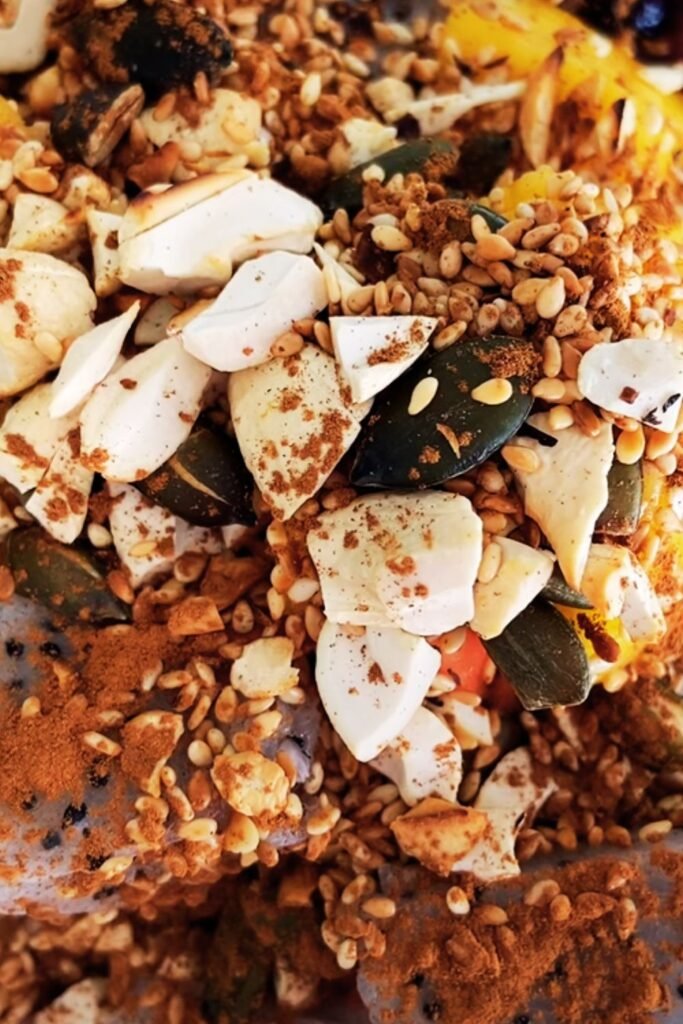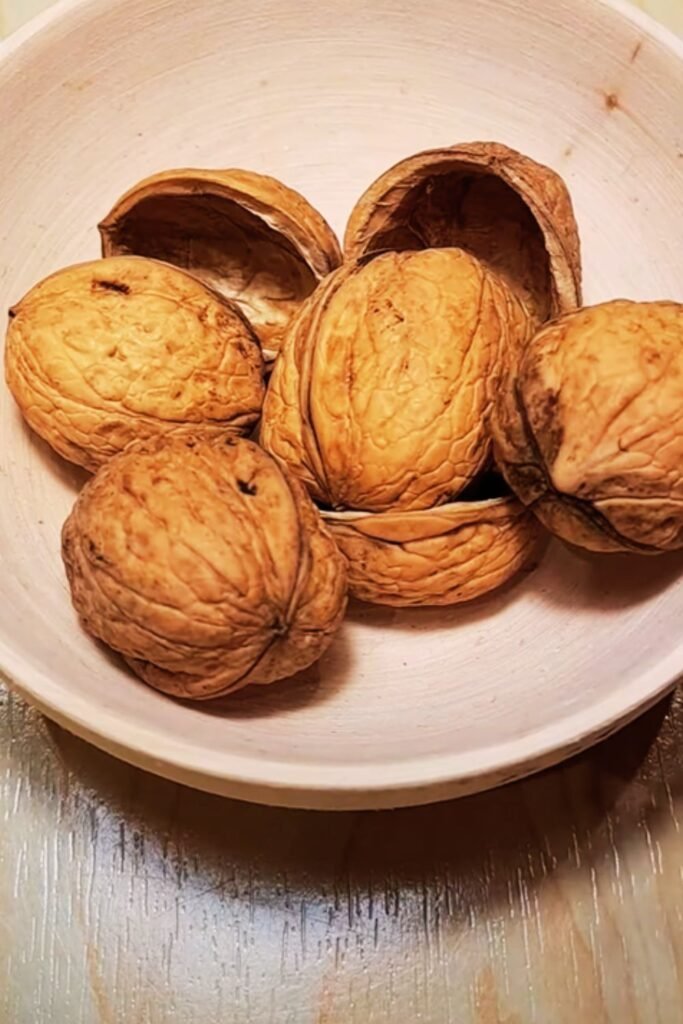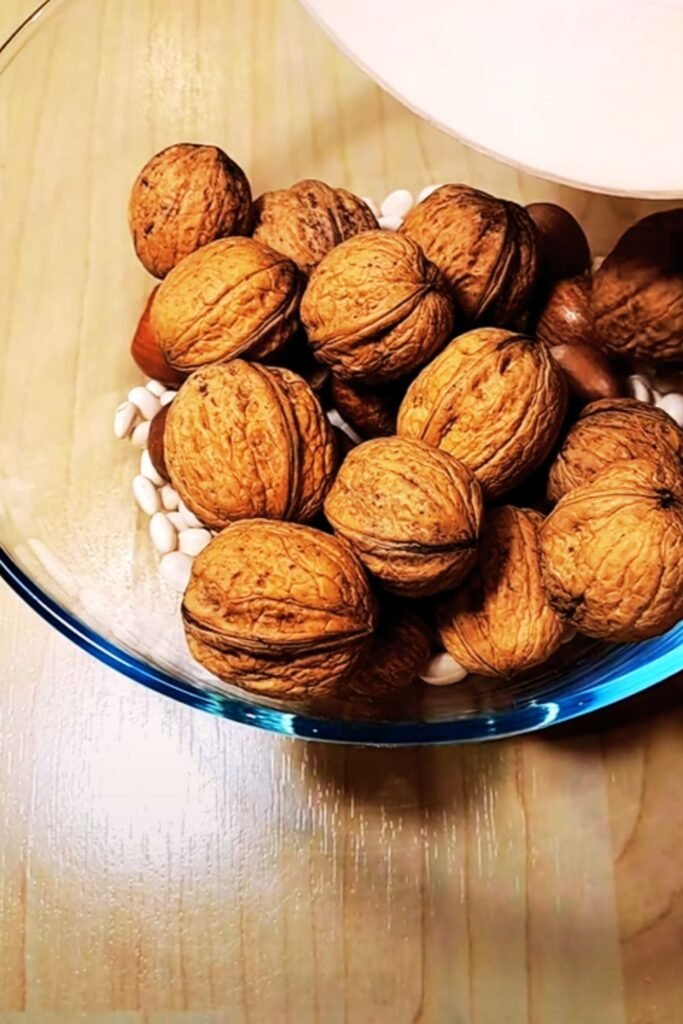I’ve always believed that presentation is just as important as taste when it comes to entertaining guests or creating memorable family moments. There’s something uniquely warm and inviting about a beautifully crafted wooden bowl filled with an assortment of mixed nuts. This timeless combination brings together natural materials with wholesome, nutritious snacks that have been enjoyed for centuries.
When I first started exploring the world of natural serving pieces, I discovered that wooden bowls aren’t just functional—they’re conversation starters, heirloom pieces, and the perfect vessel for showcasing nature’s bounty of nuts. The rustic charm of wood paired with the rich colors and varied textures of mixed nuts creates an aesthetic that’s both sophisticated and approachable.
Understanding the Appeal of Wooden Serving Bowls
Wooden bowls have been used for thousands of years across different cultures, and there’s good reason for their enduring popularity. I find that they offer several advantages over their ceramic, glass, or plastic counterparts. The natural grain patterns make each bowl unique, while the material itself is gentle on delicate nuts, preventing cracking or bruising that can occur with harder surfaces.
The thermal properties of wood are particularly beneficial when serving nuts. Unlike metal bowls that can become uncomfortably cold or hot, wooden bowls maintain a pleasant temperature that’s comfortable to touch. This characteristic makes them ideal for extended entertaining sessions where guests might be reaching for nuts throughout the evening.
From an aesthetic standpoint, wooden bowls complement virtually any décor style. Whether your home features modern minimalism, rustic farmhouse charm, or traditional elegance, a well-chosen wooden bowl enhances rather than competes with your existing design elements.
Selecting the Perfect Mixed Nuts Combination
Creating the ideal mixed nuts blend requires understanding both flavor profiles and nutritional benefits. I’ve experimented with countless combinations over the years, and I’ve learned that the key lies in balancing textures, flavors, and visual appeal.
Premium Nut Selection Guide
Almonds: These provide a satisfying crunch and mild, slightly sweet flavor. I prefer raw almonds for their clean taste, though lightly salted varieties work well for more casual gatherings.
Walnuts: With their distinctive brain-like appearance and rich, slightly bitter flavor, walnuts add sophistication to any mix. Their omega-3 content makes them a nutritional powerhouse.
Cashews: Creamy, buttery cashews offer a luxurious mouthfeel that balances the harder textures of other nuts. They’re naturally sweet and appeal to most palates.
Pecans: These Southern favorites bring a rich, buttery flavor with hints of vanilla. Their oval shape adds visual interest to the bowl.
Brazil Nuts: Large and impressive, Brazil nuts provide selenium and a unique, slightly sweet flavor. Use sparingly due to their size and intense taste.
Hazelnuts: Small but mighty, hazelnuts contribute a delicate, sweet nuttiness. They’re perfect for adding variety without overwhelming other flavors.
Pistachios: While traditionally served in shells, shelled pistachios add a beautiful green color and distinctive taste to mixed nut combinations.
Seasonal Considerations

I adjust my nut combinations based on the season and occasion. During autumn months, I lean heavily toward pecans and walnuts, which complement the season’s warming spices. Summer gatherings call for lighter combinations featuring almonds and cashews, while winter holidays deserve the full spectrum of premium nuts.
Nutritional Benefits and Health Considerations
One of the reasons I’m passionate about serving mixed nuts is their impressive nutritional profile. Each variety brings unique health benefits, and when combined thoughtfully, they create a powerhouse snack that satisfies both taste and nutritional needs.
Comprehensive Nutritional Analysis
| Nut Type | Calories (per oz) | Protein (g) | Fat (g) | Fiber (g) | Key Nutrients |
|---|---|---|---|---|---|
| Almonds | 164 | 6.0 | 14.2 | 3.5 | Vitamin E, Magnesium, Calcium |
| Walnuts | 185 | 4.3 | 18.5 | 1.9 | Omega-3, Manganese, Copper |
| Cashews | 157 | 5.2 | 12.4 | 0.9 | Zinc, Iron, Magnesium |
| Pecans | 196 | 2.6 | 20.4 | 2.7 | Manganese, Copper, Thiamine |
| Brazil Nuts | 186 | 4.1 | 18.8 | 2.1 | Selenium, Magnesium, Phosphorus |
| Hazelnuts | 178 | 4.2 | 17.2 | 2.7 | Vitamin E, Folate, Manganese |
| Pistachios | 159 | 5.7 | 12.9 | 3.0 | Potassium, Vitamin B6, Thiamine |
The variety in nutritional profiles means that a well-balanced mixed nut serving provides a comprehensive array of vitamins, minerals, healthy fats, and plant-based proteins. I particularly appreciate how nuts can help stabilize blood sugar levels and provide sustained energy, making them ideal for entertaining situations where meals might be delayed.
Wooden Bowl Care and Maintenance
Proper care of wooden bowls ensures they remain beautiful and functional for generations. I’ve learned through experience that wooden bowls require different maintenance than other serving pieces, but the effort is minimal and the results are worth it.
Daily Care Routine
After each use, I wash my wooden bowls by hand using warm water and mild dish soap. I avoid soaking them or putting them in the dishwasher, as excessive moisture can cause cracking or warping. Instead, I wash quickly, rinse thoroughly, and dry immediately with a clean towel.
Deep Cleaning and Conditioning
Monthly, I perform deeper maintenance on my wooden bowls. This involves creating a paste with coarse salt and lemon juice, which I use to scrub away any lingering odors or stains. After rinsing and drying completely, I apply a thin layer of food-grade mineral oil or specialized wood conditioner.
The conditioning process is crucial for maintaining the wood’s integrity. I apply the oil with a soft cloth, allow it to penetrate for several hours, then buff away any excess. This treatment prevents the wood from drying out and cracking while maintaining its natural luster.
Storage Considerations
Proper storage extends the life of wooden bowls significantly. I store mine in a cool, dry place with good air circulation. Stacking is acceptable if I place soft cloths between bowls to prevent scratching. I avoid storing them in plastic bags or airtight containers, which can trap moisture and lead to mold or mildew.

Creative Presentation Ideas
The visual presentation of mixed nuts in wooden bowls offers endless creative possibilities. I’ve developed several techniques that transform a simple snack into an elegant centerpiece worthy of any gathering.
Layered Arrangements
Instead of simply mixing all nuts together, I sometimes create visual layers within the bowl. Starting with larger nuts like Brazil nuts or walnuts as a base, I add medium-sized nuts like almonds and cashews, finishing with smaller varieties like hazelnuts or pine nuts on top. This technique creates depth and allows guests to see the full variety available.
Color Coordination
I consider the natural colors of different nuts when creating arrangements. The pale cream of cashews contrasts beautifully with the rich brown of walnuts, while the green of pistachios adds a pop of color. For special occasions, I might include nuts with natural variations in color, such as purple-skinned peanuts or golden-brown hazelnuts.
Garnish Integration
Fresh herbs make excellent garnishes for nut presentations. A few sprigs of rosemary or thyme nestled among the nuts add fragrance and visual interest. During holiday seasons, I might include small pinecones or seasonal elements that complement the natural wood aesthetic.
Size Variation Strategy
| Bowl Size | Recommended Capacity | Nut Quantity | Serving Size |
|---|---|---|---|
| Small (4-6 inches) | 1-2 cups | 8-12 oz | 4-6 people |
| Medium (7-9 inches) | 3-4 cups | 1-1.5 lbs | 8-12 people |
| Large (10-12 inches) | 5-6 cups | 2-3 lbs | 15-20 people |
| Extra Large (13+ inches) | 7+ cups | 3+ lbs | 20+ people |
Seasonal Serving Suggestions
Throughout the year, I adapt my wooden bowl presentations to match seasonal themes and occasions. Each season offers unique opportunities to showcase different nut combinations and presentation styles.
Spring Selections
During spring months, I focus on lighter, more delicate nut combinations. Fresh almonds, cashews, and hazelnuts dominate my selections, often accompanied by dried fruits like apricots or figs. The presentation emphasizes renewal and freshness, with green garnishes and lighter wood tones.
Summer Entertaining
Summer calls for nuts that complement outdoor entertaining and lighter fare. I prefer combinations that won’t become too oily in warm weather, focusing on almonds, pistachios, and lightly seasoned varieties. Presentation often includes fresh herbs like mint or basil that complement summer beverages and dishes.
Autumn Abundance
Fall is perhaps my favorite season for mixed nut presentations. The rich, warming flavors of pecans, walnuts, and hazelnuts perfectly complement the season’s comfort foods and warming spices. I often include spiced nuts or varieties with cinnamon and nutmeg seasonings.
Winter Celebrations
Winter holidays deserve the most elaborate nut presentations. I pull out my finest wooden bowls and create generous mixtures featuring premium nuts like macadamias, Brazil nuts, and perfectly roasted pecans. The presentation might include subtle seasonal elements like small ornaments or evergreen sprigs.

Pairing Mixed Nuts with Complementary Foods
The art of pairing mixed nuts extends beyond the nuts themselves to include complementary foods that enhance the overall tasting experience. I’ve discovered that thoughtful pairings can elevate a simple nut bowl into a sophisticated appetizer spread.
Cheese Combinations
Nuts and cheese form natural partnerships, with the saltiness and creaminess of cheese balancing the rich, earthy flavors of nuts. I particularly enjoy pairing walnuts with aged cheddar, cashews with creamy brie, and almonds with sharp goat cheese. The wooden bowl serves as a perfect anchor point for a larger cheese and nut presentation.
Fresh and Dried Fruits
Fresh fruits like grapes, apple slices, and pears complement nuts beautifully, while dried fruits such as dates, figs, and apricots add concentrated sweetness. I arrange these items in separate sections of larger wooden bowls or use multiple bowls of varying sizes to create an abundant display.
Crackers and Bread
Artisanal crackers and crusty bread provide textural contrast and serve as vehicles for combining nuts with other flavors. I select crackers with minimal seasoning to let the nuts shine, or choose varieties with herbs and seeds that complement the nut selection.
Chocolate Integration
For dessert presentations or special occasions, I incorporate high-quality dark chocolate with my nut selections. The bitterness of good chocolate enhances the natural sweetness of nuts, creating a sophisticated flavor profile that appeals to adult palates.
Hosting Tips and Etiquette
Serving mixed nuts from wooden bowls involves certain considerations that enhance the guest experience while maintaining proper food safety and presentation standards.
Service Implementation
I always provide small spoons or scoops alongside nut bowls, allowing guests to serve themselves without touching the remaining nuts. Small individual bowls or napkins positioned nearby give guests a place to collect their selections and dispose of any shells or inedible portions.
Quantity Planning
Experience has taught me to estimate approximately 2-3 ounces of mixed nuts per person for cocktail parties, with adjustments based on the duration of the event and other food offerings. For longer gatherings, I might increase this to 4-5 ounces per person.
Timing Considerations
I prepare wooden bowls with mixed nuts no more than 2-3 hours before guests arrive to maintain optimal freshness and prevent nuts from becoming stale or absorbing unwanted odors. If preparation must happen earlier, I cover bowls with clean kitchen towels rather than plastic wrap, which can trap moisture.
Temperature Management
Nuts taste best at room temperature, so I remove them from refrigerated storage about 30 minutes before serving. This allows their natural oils to reach optimal consistency and their flavors to fully develop.
Quality Assessment and Purchasing Guide
Selecting high-quality nuts ensures the best possible presentation in wooden bowls. I’ve developed specific criteria for evaluating nut quality that consistently delivers superior results.
Freshness Indicators
| Quality Factor | Fresh Nuts | Stale/Poor Quality Nuts |
|---|---|---|
| Appearance | Uniform color, intact shape | Discolored, broken pieces |
| Texture | Firm, crisp | Soft, chewy, or rubbery |
| Aroma | Pleasant, nutty fragrance | Rancid or off odors |
| Taste | Clean, characteristic flavor | Bitter or unpleasant aftertaste |
| Storage | Properly sealed containers | Open or damaged packaging |
Sourcing Recommendations
I prefer purchasing nuts from suppliers with high turnover rates, ensuring maximum freshness. Specialty food stores, farmers’ markets, and reputable online retailers often provide superior quality compared to bulk bins in conventional grocery stores where nuts may sit exposed for extended periods.
Organic vs. Conventional
While organic nuts often command premium prices, I find the investment worthwhile for regular entertaining. Organic nuts typically have cleaner flavors and are free from synthetic pesticides and fertilizers that can affect taste and aroma.
Questions and Answers
Q: How long can mixed nuts stay fresh in a wooden bowl? Once placed in a wooden bowl, mixed nuts maintain optimal quality for 2-3 hours at room temperature. For longer storage, I transfer unused nuts back to airtight containers and refrigerate them to preserve freshness.
Q: What size wooden bowl works best for entertaining 8-10 people? For groups of 8-10 people, I recommend a medium-sized bowl measuring 8-9 inches in diameter. This provides adequate capacity for generous servings while maintaining an elegant presentation scale.
Q: Can I wash wooden bowls in the dishwasher? I never recommend dishwasher cleaning for wooden bowls. The high heat and harsh detergents can cause cracking, warping, and deterioration of the wood’s natural oils. Hand washing with mild soap and warm water is always the safest approach.
Q: Which wood types are best for nut serving bowls? I prefer hardwoods like maple, cherry, walnut, and teak for nut serving bowls. These woods are dense, durable, and naturally resistant to odors and stains. They also develop beautiful patinas over time with proper care.
Q: How do I remove strong odors from wooden bowls? For persistent odors, I create a paste using baking soda and water, allowing it to sit in the bowl for several hours before scrubbing gently and rinsing thoroughly. Alternatively, rubbing with coarse salt and lemon juice effectively neutralizes most odors.
Q: Should nuts be salted or unsalted for wooden bowl presentations? I typically use a combination of both salted and unsalted nuts, with unsalted varieties comprising about 70% of the mixture. This allows guests to control their sodium intake while providing flavor variety.
Q: What’s the best way to prevent nuts from going rancid? Proper storage is crucial for preventing rancidity. I store nuts in airtight containers in cool, dark places, and I refrigerate or freeze them for longer-term storage. Purchasing from suppliers with high turnover rates also ensures fresher starting products.
Q: Can I mix different roasting levels in one bowl? Absolutely! Combining raw, lightly roasted, and deeply roasted nuts creates interesting flavor and texture contrasts. I ensure that heavily seasoned nuts don’t overpower more delicate varieties by using them sparingly in the mixture.
The combination of wooden bowls and mixed nuts represents a perfect marriage of natural materials, wholesome nutrition, and timeless elegance. Through careful selection of both bowls and nuts, proper presentation techniques, and thoughtful care, this classic pairing continues to enhance gathering experiences across generations. Whether for intimate family moments or elaborate entertaining occasions, the wooden bowl filled with perfectly selected mixed nuts remains an enduring symbol of hospitality and natural beauty.